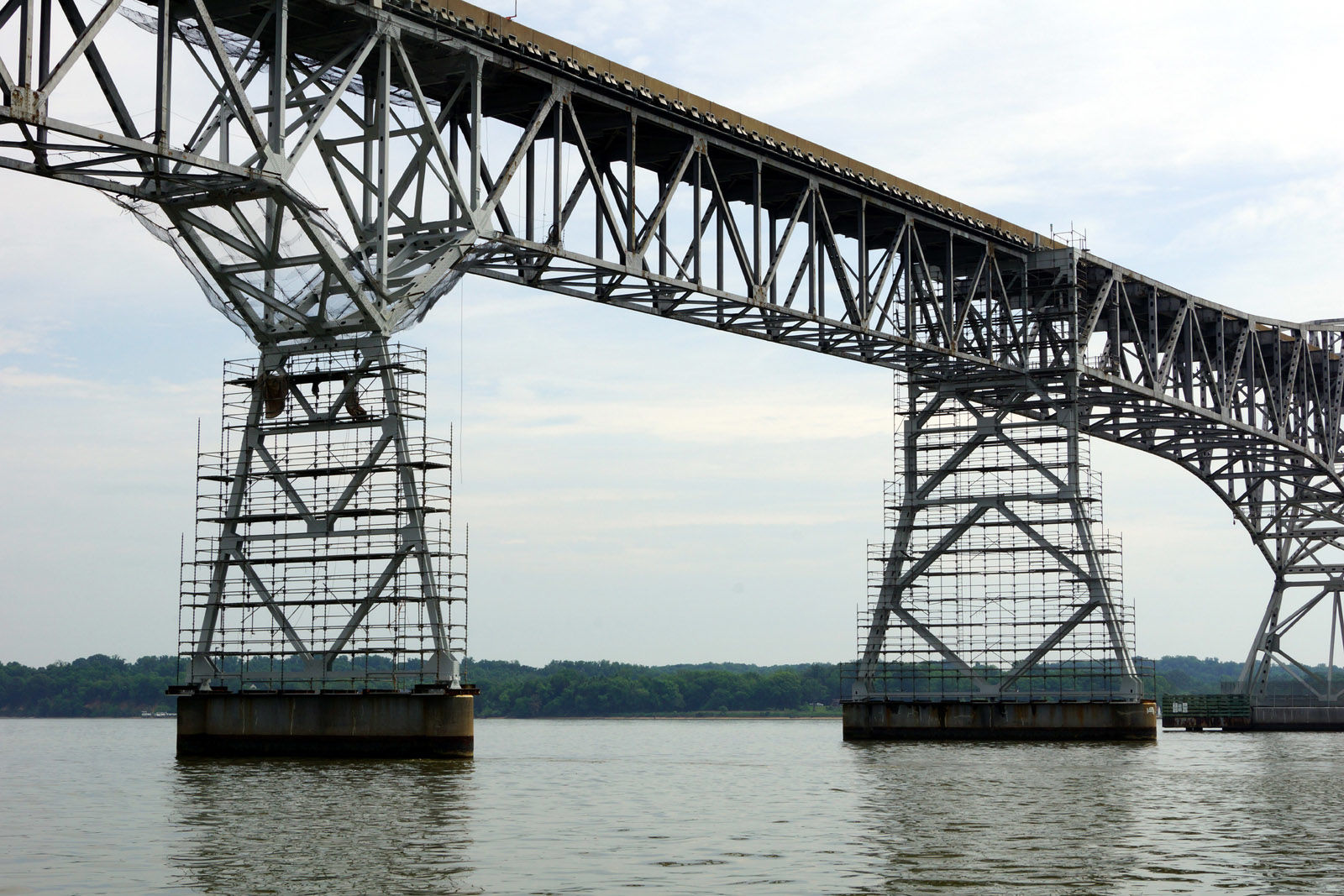
There is a sharp divide ahead of a critical vote Wednesday on a major regional bridge project — a divide that could determine whether the expansion of the Governor Harry W. Nice Memorial/Senator Thomas “Mac” Middleton Bridge on U.S. 301 in Southern Maryland moves forward.
Charles County has now thrown its support behind the scaled-back bridge expansion, with the hope that the Maryland Transportation Authority will keep an originally promised bike and pedestrian trail in the project. The transportation authority is an independent agency that finances, constructs, operates and maintains Maryland’s toll facilities.
The Hogan administration backtracked on that promise, and planned to scrap the path.
After pushback that threatened approval at the regional Transportation Planning Board Wednesday, Maryland allowed companies bidding on the project to provide cost estimates with the path or without it.
If the Transportation Planning Board does not approve Maryland’s requested changes, the project would not be eligible for critical federal loans or certain other funding.
The state estimates the project will cost $768.6 million with funding through Maryland toll revenues, debt and federal support.
A winning bidder could be selected this fall, and construction could begin within the next year.
Without the trail, the state has said the bridge could be cheaper and bikes could simply ride in one of the two highway-speed lanes that cars use each way. The widening is meant to handle ever-busier traffic on U.S. Route 301 for the next 100 years.
The current bridge, built in December 1940 to connect Newburg, Maryland and Dahlgren, Virginia over the Potomac River, is 1.7 miles long and only two lanes.
The continued push to cancel the path, which had been promised in environmental reviews and in a 2016 announcement about reconstruction plans, drove Maryland Bicycle and Pedestrian Advisory Committee Chairperson Eric Brenner to resign Sunday night.
In a letter to Gov. Larry Hogan, Brenner cited the lack of discussion or data to support cutting the trail out of the bridge project and the projected economic, tourism and environmental benefits of including the path.
He also challenged state responses to follow up questions as “a series of mistruths (charitable language),” and said the MdTA [Maryland Transportation Authority] has made “one unforced error after another,” since some of the most important decisions on safety for people walking and biking are tied into how to cross bridges over rivers, roads or train tracks.
Brenner said he hopes the actual cost differences between a bridge with a trail and one without it will be shared publicly prior to any decision being made.
Charles County Commissioners President Reuben Collins urged the regional Transportation Planning Board to approve the project changes Wednesday as they stand though.
“We believe the construction of a new, four-lane bridge is critical to relieving peak-period congestion, while replacing an antiquated structure that frequently inhibits the movement of people and goods within our region,” Collins wrote.
Charles County’s support comes with the hope the state will build the separated bike and pedestrian path to help increase tourism and make trips safer.
“We believe the protected hiker/biker lane not only creates a safe crossing for these users but also helps facilitate the multimodal infrastructure we are striving to develop in Charles County for today, and into the projected 100-year lifespan of the new bridge,” Collins wrote.
The Tri-County Council for Southern Maryland, a quasi-governmental body dealing with regional issues in Calvert, Charles and St. Mary’s counties, came out even more strongly in favor of approving Maryland’s request, to ensure an application can move forward for a low-interest federal loan that could cover nearly one third of the bridge costs.
“The full council, its Regional Infrastructure Advisory Committee and its Bicycle Infrastructure Advisory Committee have always supported a separated bicycle/pedestrian lane. However, the council’s position is that four full travel lanes for vehicles is the single most important feature of the new bridge!” the council wrote.
A no vote Wednesday could prevent the bridge expansion from moving forward at all, St. Mary’s County Commissioner Todd Morgan and Calvert County Commissioner Steve Weems warned on behalf of the council.
Brenner, the now former state bike and pedestrian advisory chair, countered that continuing to consider a bridge without the promised trail undermines commitments Maryland is making as part of other projects, such as planned toll lanes around the Capital Beltway and up Interstate 270.
“Many local officials are already skeptical that MDOT [Maryland Department of Transportation] can be trusted to keep commitments on design/build and P3 (public-private partnership) projects, or to share data in any way,” Brenner said.
The Maryland Transportation Authority similarly had promised a longer bike path along the Intercounty Connector, but only built the path along part of that route.
“That was done during a prior administration, but MdTA used the exact same bait-and-switch tactic with the Route 301 bridge, only this time your name was on the initial promise,” Brenner wrote Hogan.
Brenner said he did not want to have to resign, but felt he had to.
“[A]llowing MdTA to break your original promise will not be viewed kindly in the years ahead – nor will it be correctable until the next bridge is built, more than 100 years from now,” Brenner wrote.







